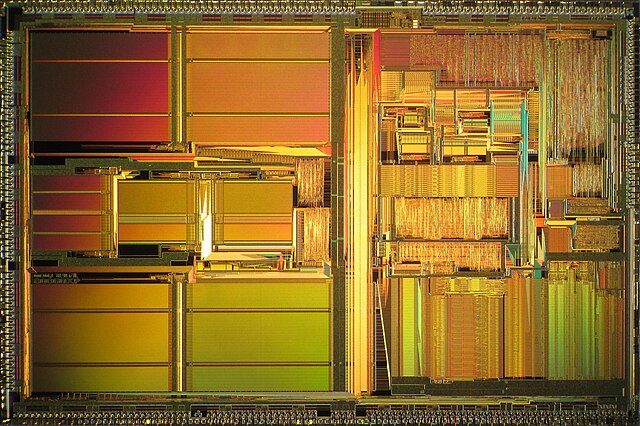The Intel i860 is a RISC microprocessor design introduced by Intel in 1989. It is one of Intel's first attempts at an entirely new, high-end instruction set architecture since the failed Intel iAPX 432 from the beginning of the 1980s. It was the world's first million-transistor chip. It was released with considerable fanfare, slightly obscuring the earlier Intel i960, which was successful in some niches of embedded systems. The i860 never achieved commercial success and the project was terminated in the mid-1990s.
Intel i860 XR microprocessor (33 MHz edition)
Intel i860 microprocessor (50 MHz edition)
Die of Intel i860 XR.
Die of Intel i860 XP.
Reduced instruction set computer
In electronics and computer science, a reduced instruction set computer (RISC) is a computer architecture designed to simplify the individual instructions given to the computer to accomplish tasks. Compared to the instructions given to a complex instruction set computer (CISC), a RISC computer might require more instructions in order to accomplish a task because the individual instructions are written in simpler code. The goal is to offset the need to process more instructions by increasing the speed of each instruction, in particular by implementing an instruction pipeline, which may be simpler to achieve given simpler instructions.
The Sun Microsystems UltraSPARC processor is a type of RISC microprocessor.
An IBM PowerPC 601 RISC microprocessor
RISC-V prototype chip (2013)







